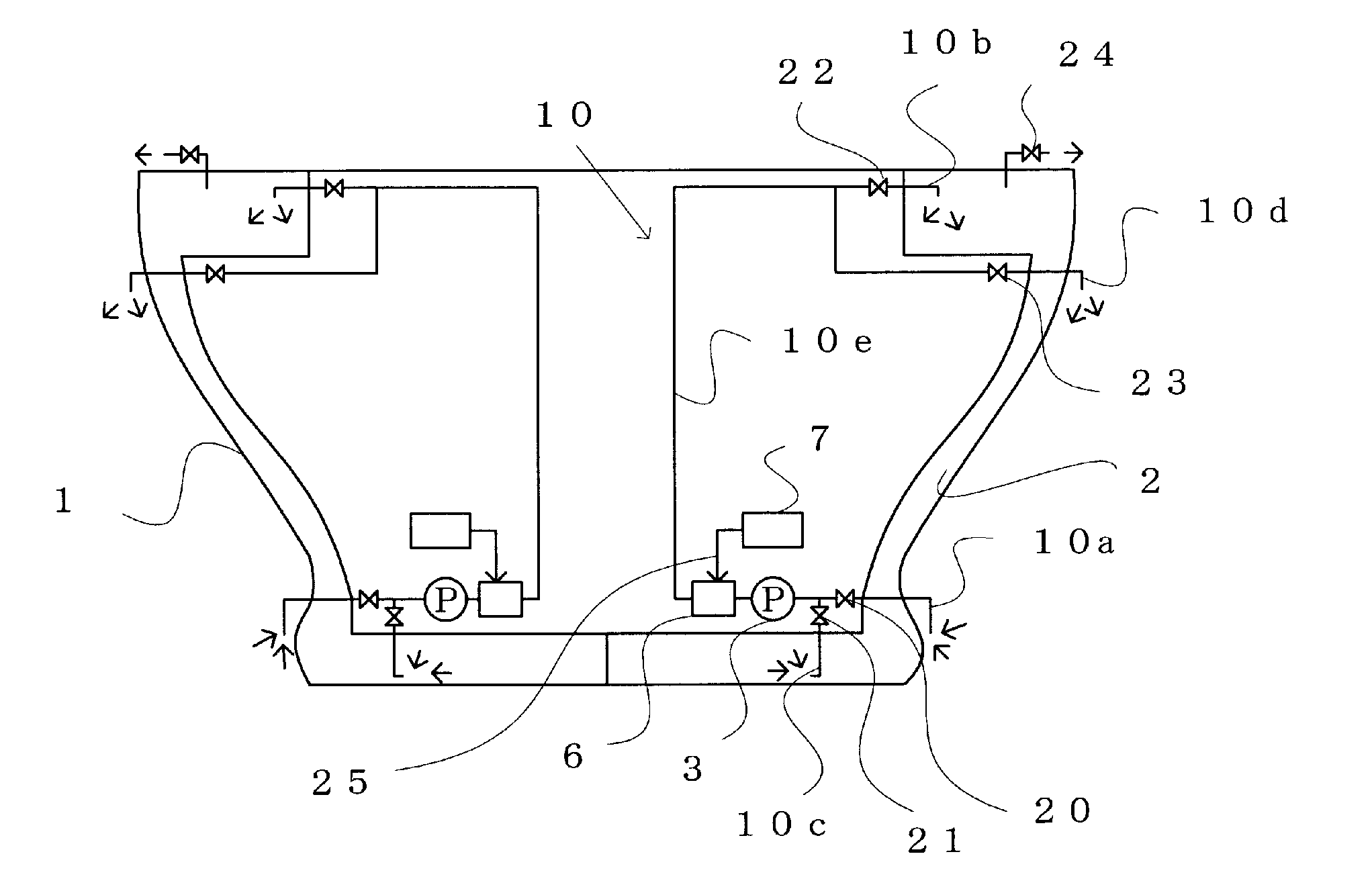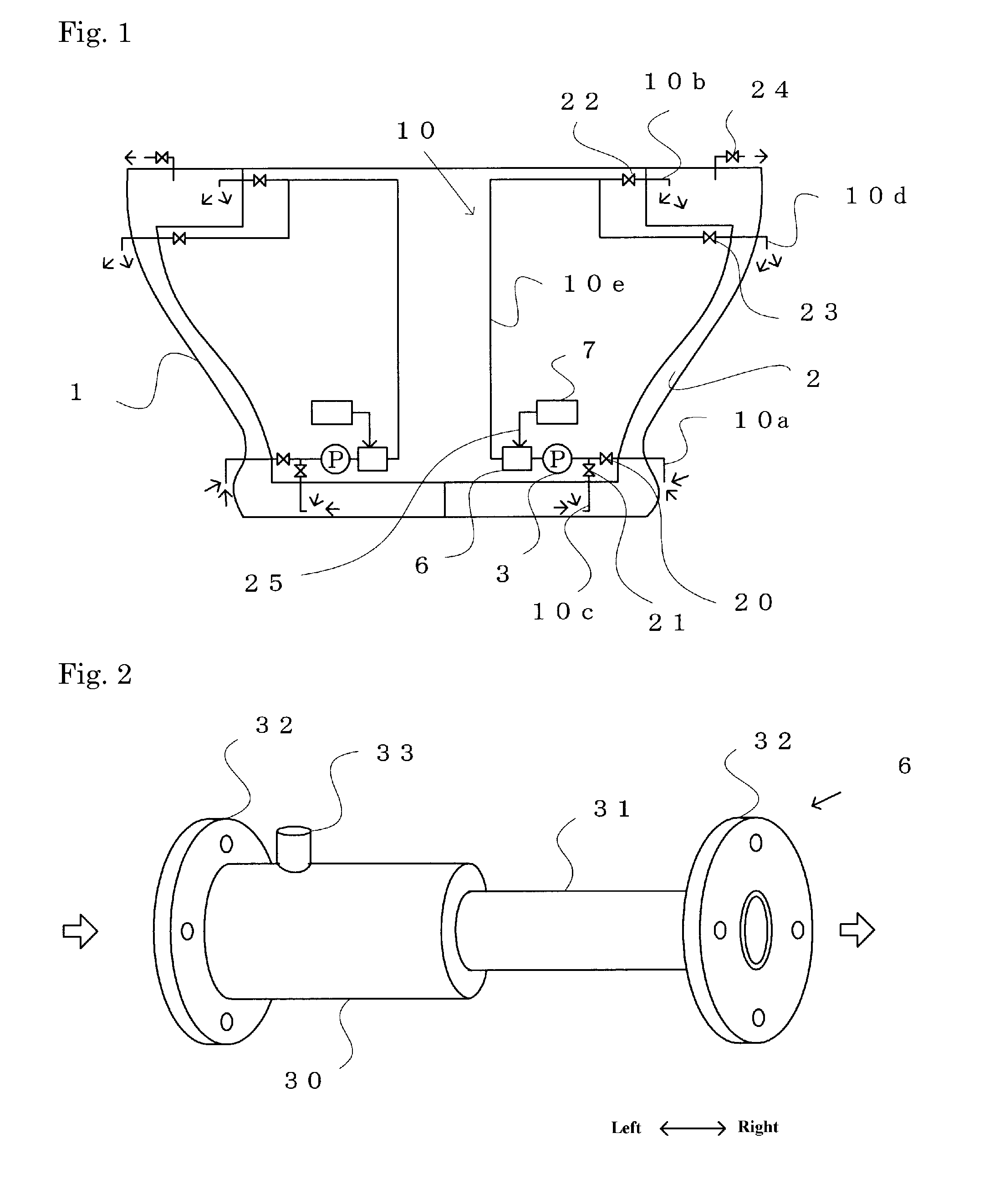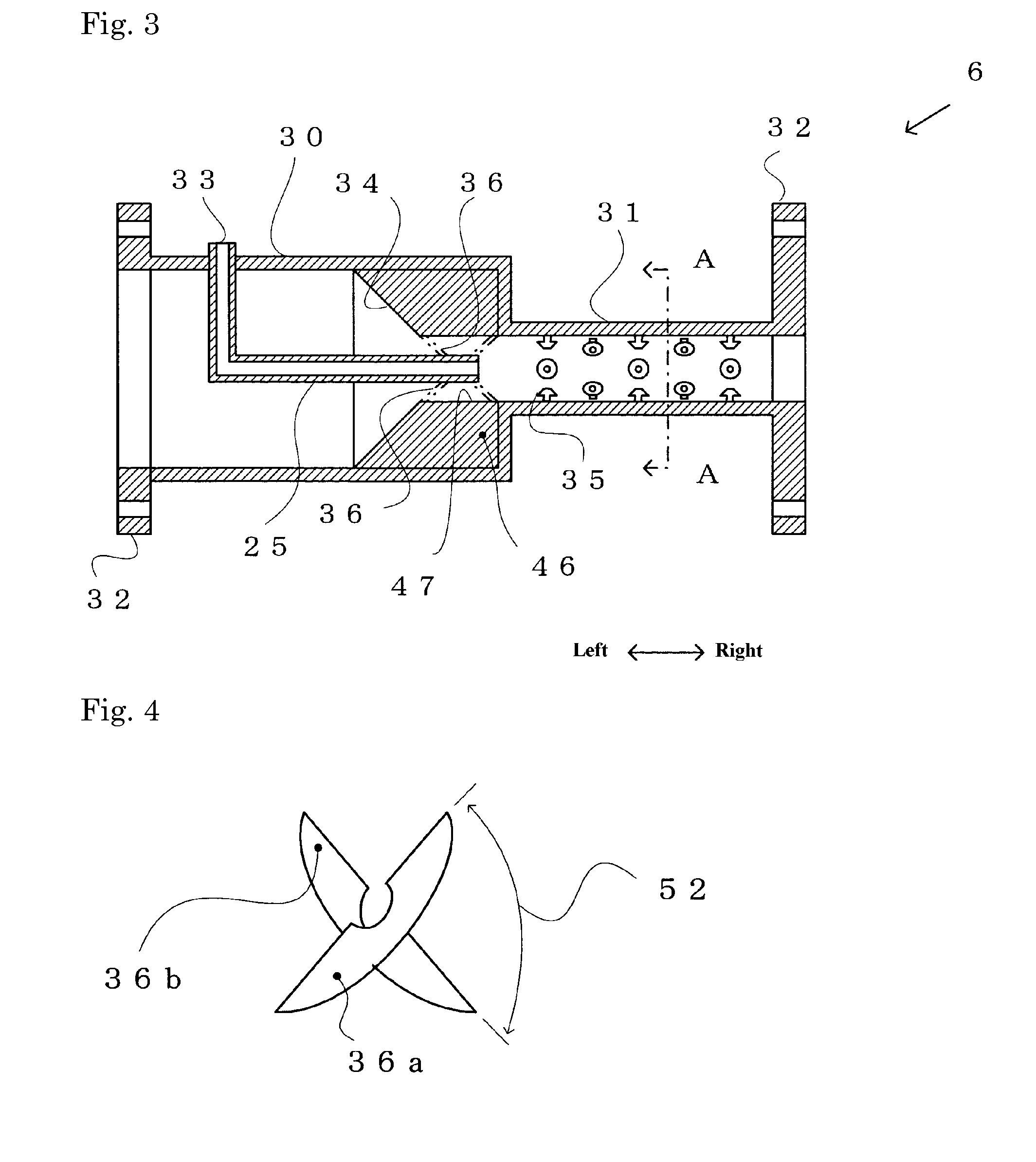Ballast water treating apparatus
a technology of ballast water and treating apparatus, which is applied in the nature of treatment water, waterborne vessels, chemical/physical processes, etc., can solve the problems of inability to sterilize cholera, difficult to implement, and adversely affect the ecological system in the area
- Summary
- Abstract
- Description
- Claims
- Application Information
AI Technical Summary
Benefits of technology
Problems solved by technology
Method used
Image
Examples
first embodiment
[0088]FIG. 1 shows the configuration of a ship's ballast-water sterilization system. The ship 1 is a double-hull type, having double sides and a double bottom that form a ballast tank 2. The ballast tank 2 is referred to as a top tank, a bilge tank, and a bottom tank, when viewed from the side, and is partitioned into right and left portions based on the center of the ship's bottom. A pipeline 10 for supplying water into, and discharging ballast water from, the ballast tank 2 has two routes. Here, the right-side portion of FIG. 1 is referred to. When the ballast water is supplied to the ballast tank 2, the ballast pump 3 opens valves 20 and 22, closes valves 21 and 23, opens valve 24 so that the air or the spilled ballast water in the ballast tank 2 is released to the outside, pumps seawater from the sea via the outside end of the pipe 10a, sterilizes it with the in-line mixer 6, and supplies the ballast water to the top of the ballast tank 2 through the pipes 10e and 10b. When the ...
PUM
| Property | Measurement | Unit |
|---|---|---|
| size | aaaaa | aaaaa |
| diameter | aaaaa | aaaaa |
| diameter | aaaaa | aaaaa |
Abstract
Description
Claims
Application Information
 Login to View More
Login to View More - R&D
- Intellectual Property
- Life Sciences
- Materials
- Tech Scout
- Unparalleled Data Quality
- Higher Quality Content
- 60% Fewer Hallucinations
Browse by: Latest US Patents, China's latest patents, Technical Efficacy Thesaurus, Application Domain, Technology Topic, Popular Technical Reports.
© 2025 PatSnap. All rights reserved.Legal|Privacy policy|Modern Slavery Act Transparency Statement|Sitemap|About US| Contact US: help@patsnap.com



